The present bird is also one of the white-booted species of Eriocnemis, and has the under tail-coverts blue; it is distinguished further by its dark blue tail, and the coppery reflections on the upper surface.
It was discovered by Mr. Jelski in Central Peru, at Maraynioc, in June and August 1871, and was described by Dr. Taczanowski, who says that it is nearly allied to my E. cupreiventris, but, besides other differences of coloration, it has a longer and stouter Dill, a shorter and less forked tail, and considerably longer tail-feathers.
I copy the following description from Mr. Elliot’s ‘Synopsis of the Humming-Birds:’—
Adult. Upper parts bronzy green, passing into pure green on the rump and upper tail-coverts; wings purplish black; under surface glittering green; under tail-coverts shining sapphire-blue; tarsal tufts white; tail dark blue; bill black. Total length 4\(\frac{1}{4}\) inches, wing 2\(\frac{5}{8}\), tail 2, bill along the gape 1\(\frac{1}{8}\).
The Plate represents male and female birds kindly lent to me by Dr. Taczanowski of Warsaw.
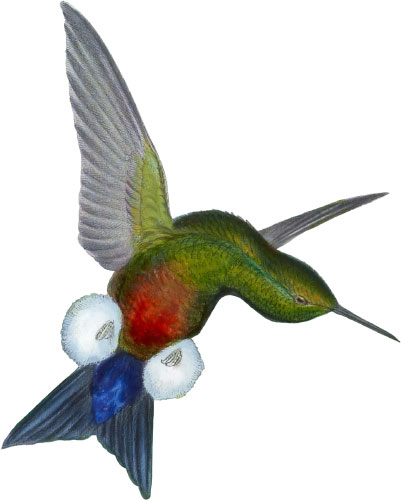 Eriocnemis cupreiventris
Coppery-bellied Puff-leg
Eriocnemis cupreiventris
Coppery-bellied Puff-leg
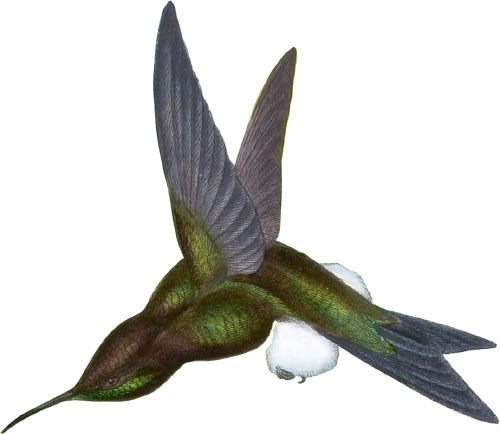 Eriocnemis simplex
Olive-coloured Puff-leg
Eriocnemis simplex
Olive-coloured Puff-leg
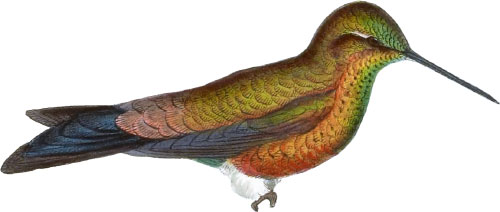 Eriocnemis Isaacsoni
Long-billed Puff-leg
Eriocnemis Isaacsoni
Long-billed Puff-leg
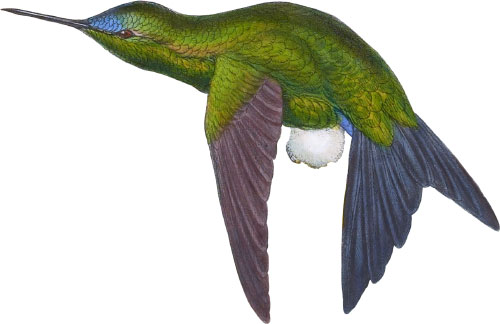 Eriocnemis Luciani
Buquet’s Puff-leg
Eriocnemis Luciani
Buquet’s Puff-leg
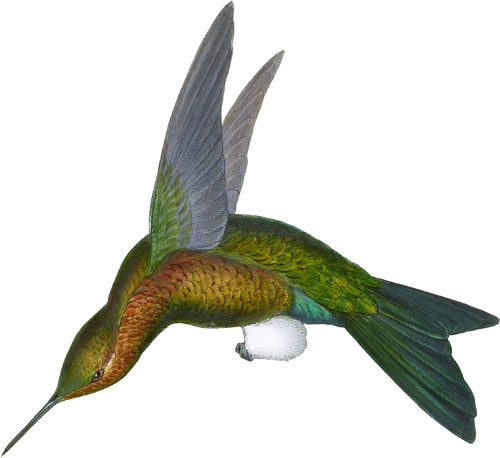 Eriocnemis Mosquera
Mosquera’s Puff-leg
Eriocnemis Mosquera
Mosquera’s Puff-leg
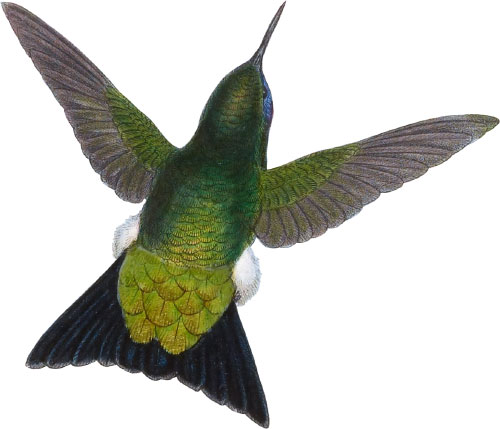 Eriocnemis vestita
Glowing Puff-leg
Eriocnemis vestita
Glowing Puff-leg
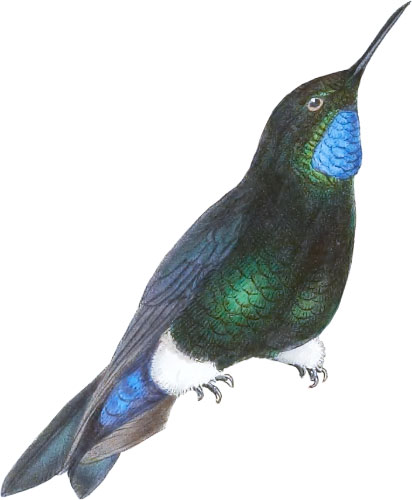 Eriocnemis nigrivestis
Black-bested Puff-leg
Eriocnemis nigrivestis
Black-bested Puff-leg
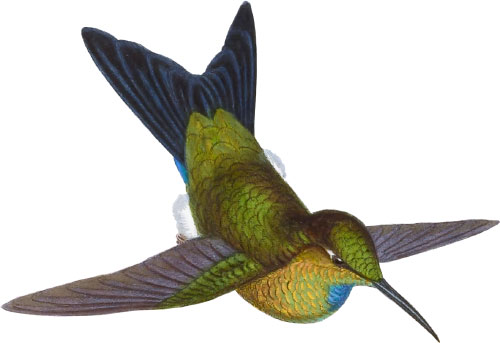 Eriocnemis Godini
Godin’s Puff-leg
Eriocnemis Godini
Godin’s Puff-leg
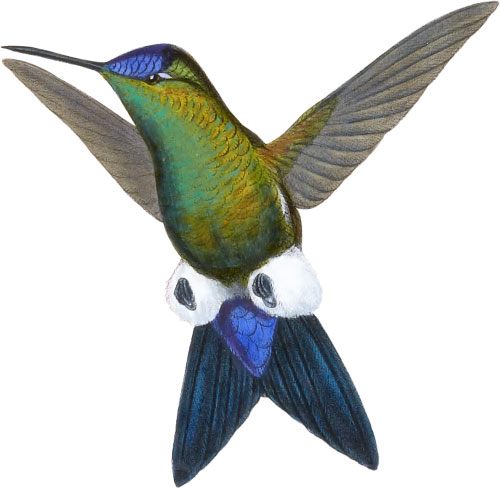 Eriocnemis D’Orbignyi
D’Orbigny’s Puff-leg
Eriocnemis D’Orbignyi
D’Orbigny’s Puff-leg
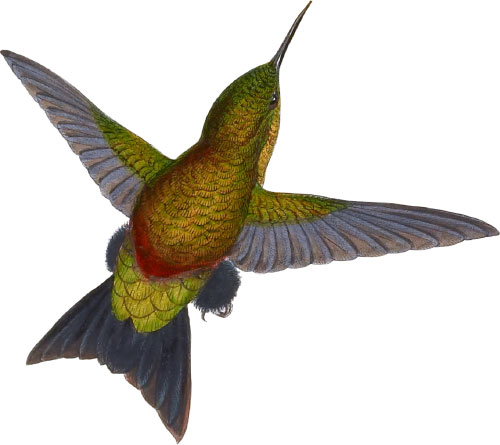 Eriocnemis Derbiana
Derby’s Puff-leg
Eriocnemis Derbiana
Derby’s Puff-leg
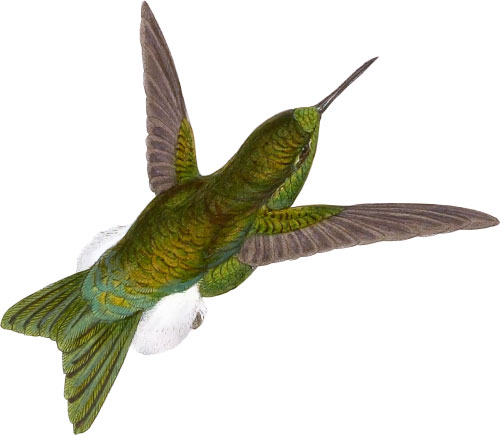 Eriocnemis Alinæ
Metallic Puff-leg
Eriocnemis Alinæ
Metallic Puff-leg
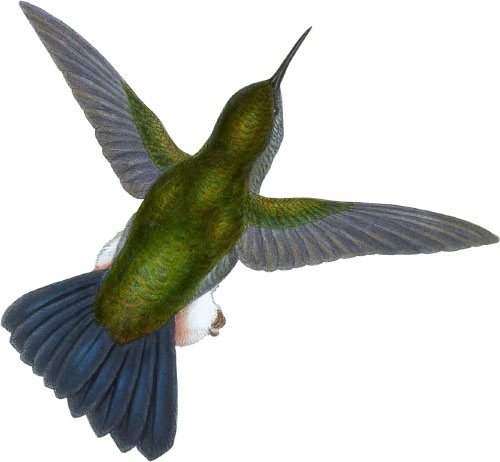 Eriocnemis squamata
Scaly Puff-leg
Eriocnemis squamata
Scaly Puff-leg
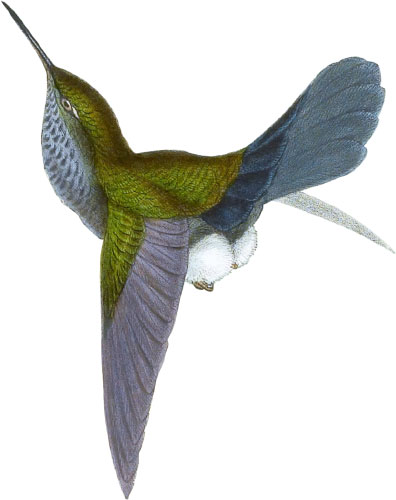 Eriocnemis lugens
Hoary Puff-leg
Eriocnemis lugens
Hoary Puff-leg
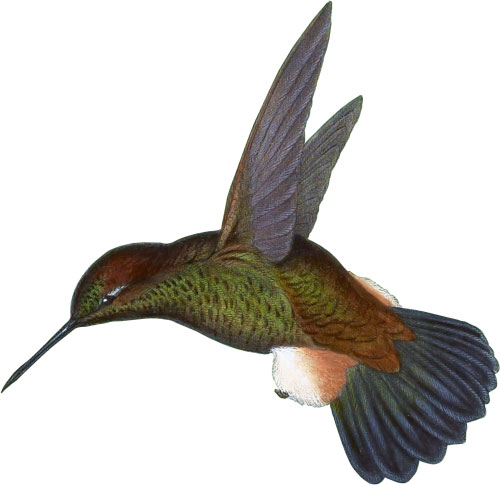 Eriocnemis Aureliæ
Aurelia’s Puff-leg
Eriocnemis Aureliæ
Aurelia’s Puff-leg
 Eriocnemis dybowskii
Dybowski’s Puff-leg
Eriocnemis dybowskii
Dybowski’s Puff-leg
 Eriocnemis dyselius
Black-vented Puff-leg
Eriocnemis dyselius
Black-vented Puff-leg
 Eriocnemis chrysorama
Blue-vented Puff-leg
Eriocnemis chrysorama
Blue-vented Puff-leg
 Eriocnemis assimilis
Brown-booted Puff-leg
Eriocnemis assimilis
Brown-booted Puff-leg
 Eriocnemis smaragdinipectus
Green-breasted Puff-leg
Eriocnemis smaragdinipectus
Green-breasted Puff-leg
Featuring all 422 illustrated species from John Gould’s A Monograph of the Trochilidæ, or Family of Humming-Birds arranged by color.